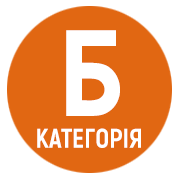REPRESSION BY THE SOVIET AUTHORITY AGAINST THE ROMAN CATHOLIC CLERGY OF WESTERN UKRAINE AS AN EXAMPLE OF PRIESTS OF THE LVIV ARCHDIOCESE (1939–1945)
DOI:
https://doi.org/10.32999/ksu2786-5118/2022-40-4Keywords:
Roman Catholics, priests, USSR, Lviv Archdiocese, victims of the regimeAbstract
Purpose and methodology of the study. The purpose of the scientific research is to determine, on the basis of a complex and objective analysis of archival sources and scientific literature, the specifics of the religious activity of the priests of the Roman Catholic Church and to establish the reasons and prerequisites for their tragic death using the example of several priests of the Lviv Archdiocese. During the scientific research, the comparative-historical method, the historicalsystematic method, the structural-thematic principle of historiography were used, cause-and-effect relationships were established, and the method of analysis and synthesis of historical sources was used. Results and conclusions. On the basis of these methods, the following results were achieved: the prerequisites for the brutal activity of the Soviet authorities in relation to the Roman Catholic clergy were established; established the main methods by which the totalitarian regime achieved and carried out the policy of liquidation of the structure of the Church; the life activities of several representatives of the Roman Catholic clergy who died tragically at the hands of the Soviet regime were established and analyzed; the main reasons for the arrests, imprisonments and death sentences handed down to the priests of the Lviv Archdiocese were investigated; the source base, on the basis of which the study of the biographical data of clergymen was carried out, was analyzed. During the analysis of the literature used in the research process, a lack of information about the life and activities of the priests of the Lviv Archdiocese was revealed in the domestic historiography. Thus, one of the results of the study is to draw the attention of the modern scientific world and society to this issue, because the important task facing domestic researchers is to restore historical justice through the study of human victims who tragically died for loyalty to their activities and mission. The process of liquidation of the structure of the Roman Catholic Church during the period under study is one of the most brutal methods of fighting religion in the then communist Soviet Union. Since, according to representatives of the occupying totalitarian regime, it was the Roman Catholic Church that posed the greatest threat to the Soviet regime, the representatives of the relevant bodies and structures conducted a degrading and ruthless policy towards the Roman Catholic clergy. Using the example of several human destinies, the article reveals the methods used by the totalitarian occupation regime to achieve the goal of atheism of society through attempts to liquidate the Church and its representatives.
References
Байдич В. Антирелігійна діяльність радянської влади проти римо-католицької церкви в Україні (1958–1960 рр.). Хмельницькі краєзнавчі студії : науково-краєзнавчий збірник. Хмельницький : ФОП Стрихар А.М., 2017. Вип. 11. С. 64–79.
Войналович В. Партійно-державна політика щодо релігії та релігійних інституцій в Україні 1940–1960-х років: Політологічний дискурс / Національна академія України ; Інститут політичних і етнонаціональних досліджень. Київ, 2005. С. 603–604.
Горбач С. Деякі аспекти відносин між Ватиканом та СРСР після Другої світової війни (1945–1953). Український історичний журнал. 1998 (листопад–грудень). № 6 (423) / Національна академія наук України ; Інститут історії України ; Інститут політичних і етносоціальних досліджень. С. 69.
Чаплицкий Б. Книга памяти: мартиролог католической церкви в СССР. Комиссия «Мартиролог-2000» Апост. администратуры для католиков Севера Европ. части России. Москва, 2000. LXIII, 766 с.
Archiwum Instytutu Polskiego i Muzeum im. Gen. W. Sikorskiego w Londynie, A.7.672/1. Załącznik nr 251. A.11.49/15; KOL, 342/IV
Biała Księga. Martyrologium duchowieństwa – Polska XX w. (lata 1914–1989). Dane osobowe. URL: http://www.swzygmunt.knc.pl/MARTYROLOGIUM/POLISHRELIGIOUS/vPOLISH/HTMs/POLISHRELIGIOUSmartyr0966.htm (дата звернення: 12.01.2023).
Duszpasterz Polski Zagranicą. Rzym. 1985. Nr. 2 (155). S. 303.
Dzwonkowski R. Kościół katolicki w ZSRR 1917–1939. Zarys historii. Lublin, 1997. S. 73.
Dzwonkowski R. Leksykon duchowieństwa polskiego represjowanego w ZSRS 1939–1988, Lublin, 2003. S. 16.
Dzwonkowzki R. Odrodzenie Kościoła katolickiego obrządku łacińskiego w ZSRR. Polacy w kościele Katolickim w ZSRR / pod red. ks. E. Walewandra. S. 213–214.
Katyń. Dokumenty zbrodni, t. 1: Jeńcy nie wypowiedzianej wojny. Sierpień 1939 – marzec 1940 / red. nauk. W. Materski, Warszawa, 1995.
Madała T. Polscy księża katoliccy w więzieniach i łagrach sowieckich od 1918 r., Lublin. 1996.
Olechowski P. Między ołtarzem a gabinetem partyjnym. Kościół rzymskokatolicki w sowieckim Lwowie w latach 1953–1959 w świetle raportów pełnomocnika Rady ds. Kultów Religijnych w obwodzie lwowskim. Pamięć i Sprawiedliwość. № 1 (29). 2017. S. 177.
Rospond A. Z Żurowa w głąb tajgi syberyjskiej [w:] Polacy Rosji mówią o sobie, wybór i wstęp E. Walewander. T. 2. Lublin, 1994. S. 176.
Siemaszko S. Świadkowie przeżyć sowieckich 1939–1946. Londyn, 1999. S. 250–251.



